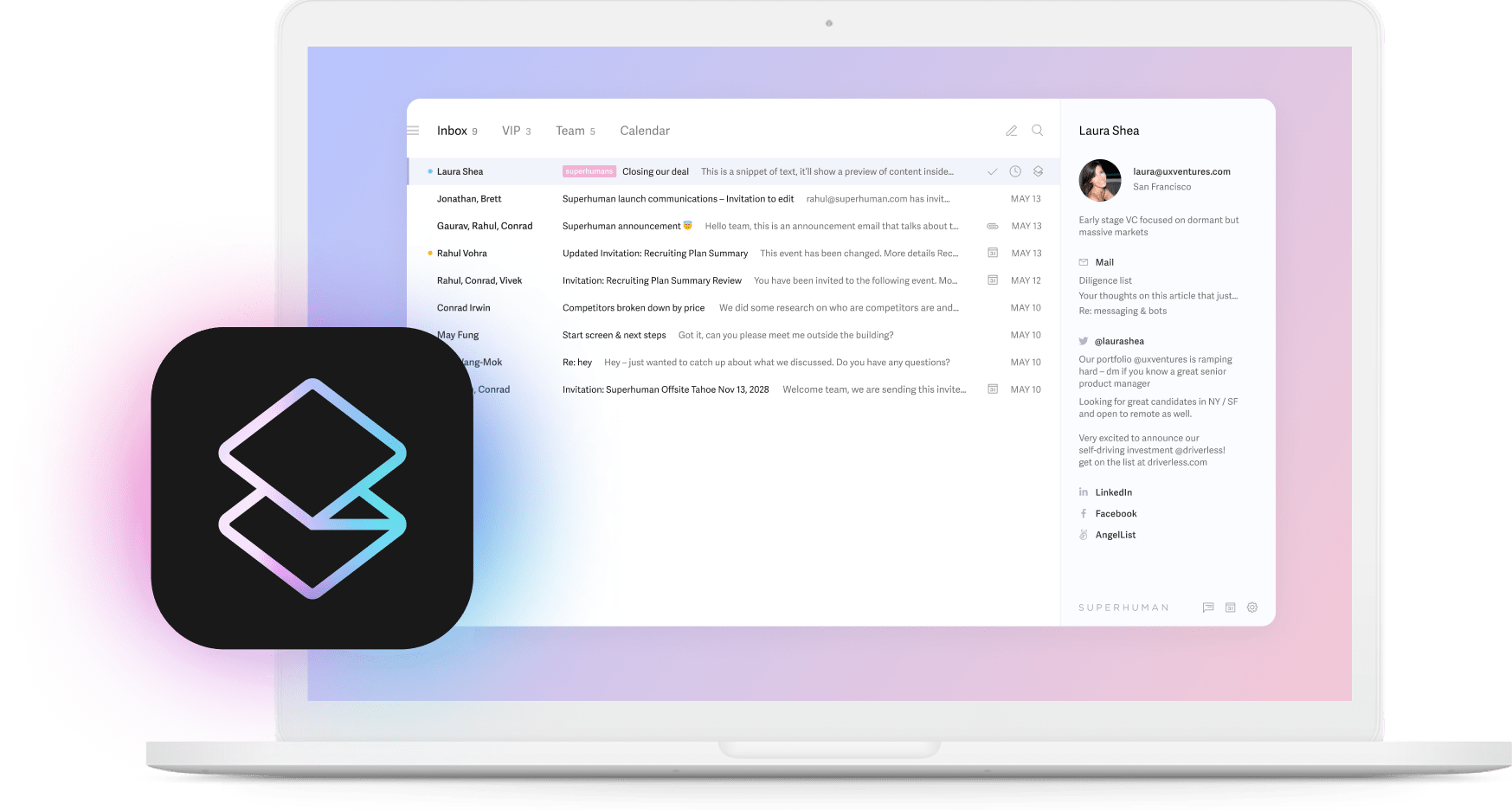
Ever noticed how the best teams seem to read each other's minds? That's not telepathy—it's effective team communication. And it's becoming a superpower in today's scattered workplace.
Research shows that companies with strong team communication are 4.5x more likely to keep their top talent. It's the difference between building something that lasts and watching your best people walk out the door.
Great team communication isn't just about productivity (though who doesn't want more of that?). It's the invisible force that turns a group of talented individuals into something greater than the sum of its parts.
The anatomy of successful team communication
Ever been in a meeting where one person wants bullet points, another tells stories, someone else demands data, and the fourth is checking their watch? Welcome to the fascinating mess of human communication styles.
Team communication styles and their impact
The DiSC profile system breaks down how we communicate into four main flavors:
- Dominance (D): These folks are like human bullet points. Direct, fast, focused on results. They don't want your life story—they want the bottom line, yesterday.
- Influence (I): The natural storytellers. They communicate through enthusiasm and connection. Facts matter less than how the message makes people feel.
- Steadiness (S): The careful listeners. They process information thoroughly before responding and prioritize harmony over speed. They're the ones making sure no one gets left behind.
- Conscientiousness (C): The data devotees. They communicate through analysis and precision. If you can't prove it with facts, they're skeptical.
When these styles collide without awareness, it's like watching people try to play four different sports on the same field. The D-type is playing basketball—fast breaks, quick decisions. The I-type is orchestrating a halftime show. The S-type is methodically playing chess. And the C-type is calculating everyone's stats.
No wonder teams struggle! Here's what happens when styles clash:
Teams that understand these differences can transform communication from a battlefield into a dance floor. The D-type brings decisive momentum. The I-type rallies enthusiasm. The S-type ensures nobody gets trampled. The C-type makes sure the dance floor doesn't collapse.
Common communication barriers in teams
If team communication were easy, we'd all be doing it perfectly. But it's not. It's a high-wire act performed on a windy day while juggling flaming torches. Let's explore what makes it so challenging.
Universal communication barriers
Some communication barriers are like the common cold. They affect teams everywhere:
- Organizational silos: You've seen this movie before. Marketing doesn't talk to Sales. Engineering and Product live on different planets. Finance speaks a language only they understand. Soon, everyone's working hard in exactly the wrong direction.
- Information overload: The average employee receives 121 emails daily. Add Slack messages, meetings, texts, and calls—it's like trying to drink from a firehose. Important information drowns in the flood.
- Cultural and language differences: When teams span continents and cultures, the same words can carry different meanings. A direct request that sounds efficient to an American might seem rude to a teammate in Japan. A "yes" from a colleague in India might mean "I heard you" rather than "I agree."
- Status differentials: Ever noticed how some meeting rooms fall silent when the boss walks in? Hierarchy creates invisible barriers to honest communication. The higher the stakes, the harder the truth becomes to tell.
Remote work communication barriers
Remote work adds its own special challenges:
- Lack of non-verbal cues: We evolved to communicate face-to-face, reading subtle expressions and body language. In remote work, those signals vanish or get compressed into pixels. Did your joke land or offend? Was that silence agreement or confusion? Without visual feedback, we're all partially communication-blind.
- Time zone tetris: When your team spans the globe, someone's always having breakfast while someone else is having dinner. A study from Microsoft found remote workers collaborate 25% less with colleagues outside their immediate teams. Adopting effective practices for managing remote teams can help address these issues.
- Technical gremlins: "You're frozen." "We can't hear you." "Can everyone see my screen?" Technology connects us—until it doesn't. Every frozen video call or garbled audio disjoins conversation flow.
- The missing water cooler: Those spontaneous encounters where great ideas often spark—gone. Remote teams miss the serendipitous conversations that build relationships and cross-pollinate ideas.
Traditional office communication barriers
Even the old-school office setting has its communication pitfalls:
- The architecture of isolation: Open offices create noise that drives people to headphones. Cubicles build walls. Private offices hide leaders. Physical space can either connect or separate us.
- The hierarchy hill: In traditional settings, information often flows down from leadership mountain to employee valley—but struggles to climb back up. Bad news gets filtered, softened, or blocked entirely.
- Meeting madness: The average employee spends 31 hours monthly in unproductive meetings. That's not communication—that's captivity.
Strategic framework for transforming team communication
Let's move from problems to solutions. Effective team communication isn't accidental—it's architectural. Here's the blueprint for building communication systems that actually work.
1. Communication infrastructure assessment
You wouldn't build a house without checking the foundation first. Similarly, don't try fixing team communication without understanding what's happening now.
Start with these questions:
- Where does information flow smoothly in your organization? Where does it get stuck?
- Which channels do people actually use versus officially support?
- Who are the information bottlenecks? The unofficial messengers?
- What frustrates people most about how your team communicates?
For example, you might discover your team has seven different project management tools but no single source of truth. Or that critical decisions happen in hallway conversations nobody records. Or that your company chat has become a wasteland while real talk happens in private messages.
This assessment isn't just academic—it reveals the difference between your communication org chart (how things should work) and your communication reality (how information actually travels).
2. Purpose-driven communication protocols
Ever been in a meeting that should have been an email? Or gotten an email nobody reads? Or searched five platforms for information that should be obvious?
All these communication headaches stem from missing protocols—agreements about what goes where and why.
Instead of random communication, design intentional systems:
- Define channel purposes: Email is for external communication and formal internal announcements. Slack is for quick questions and updates. Docs are for information that needs to persist. Meetings are for discussions that need synchronous energy.
- Set response expectations: Not everything needs an immediate reply. Agree on reasonable response times for different channels and situations.
- Create information hierarchies: Some communication is urgent, some important, some nice-to-have, some just noise. Help your team prioritize by clearly distinguishing between them.
- Establish meeting discipline: Every meeting needs an agenda, a clear purpose, the right participants, and documented outcomes. Otherwise, it's just synchronized calendar blocking.
Without these protocols, your team's cognitive load multiplies. With them, people know exactly where to put and find information—reducing stress and saving massive time.
3. Channel optimization
Channel overload is the modern workplace epidemic. The average enterprise uses 88 different apps, forcing employees to constantly switch contexts. This isn't just annoying—it's cognitively expensive. Each platform switch costs 9.5 minutes of productivity.
The solution isn't adding more tools—it's optimizing what you have:
- Consolidate where possible: Can your team eliminate redundant tools? Could one platform serve multiple purposes?
- Integrate everything: If you can't consolidate, connect. Use integrations to make information flow between platforms without manual copying.
- Design for focus: Create communication-free zones—times or spaces where deep work happens without interruption. Not everything needs immediate attention.
- Reduce notification noise: Help team members customize notifications to get important alerts without constant pings.
When your channels work together instead of competing for attention, your team reclaims both time and mental bandwidth.
4. Real-time feedback mechanisms
Teams with effective feedback mechanisms resolve miscommunications more quickly and experience higher cohesion. Build in ways to check how well your communication is working:
- Regular communication retrospectives: Simple questions like "What communication worked well this week? What didn't? What should we change?" can reveal issues before they become crises.
- Safe channels for feedback: Create ways for team members to report communication problems without fear. Anonymous surveys work, but so do regular one-on-ones focused on process improvement.
- Communication champions: Designate people responsible for monitoring and improving how your team shares information. Give them authority to implement changes.
The goal isn't perfect communication—it's communication that improves through deliberate practice. Think of your team as communication athletes, constantly refining their skills through feedback and adjustment.
Modern team communication solutions
Technology alone won't fix your communication problems, but the right tools can amplify your solutions. Here are some standouts in the current landscape:
Notion
Notion has transformed team collaboration by merging notes, documents, wikis, and project management into one flexible platform. It's like if your team's brain had a user interface. A place where information lives in context instead of scattered across systems. Particularly valuable for remote teams, Notion creates a digital headquarters where knowledge becomes discoverable instead of buried.
Superhuman
The app that makes email feel good again. As the most productive email app ever made, it helps teams fly through their inbox and save 4 hours per week every week. Teams reply 1–2 days sooner and respond to twice as many emails in the same amount of time.
Superhuman's Shared Conversations & Team Comments feature is revolutionizing team collaboration. You can @mention anyone to share an email, even if they don't use Superhuman!
Recipients can view the email on the web or in Superhuman, then comment directly on the conversation and see future emails and comments. This eliminates the need to screenshot or forward emails, allowing teams to collaborate in one place and rapidly unblock progress.
Then there’s Superhuman's AI capabilities. It learns your writing style over time by analyzing messages you've sent to specific recipients before, matching tone and voice automatically. The app's Split Inbox automatically triages incoming email, helping teams focus on what matters most.
Superhuman saves teams 15 million hours every single year by making workflows effortless and making inboxes feel 10x lighter.
Try Superhumanmonday.com
turns work management visual. Instead of lists and texts, it creates colorful, intuitive workflows that actually reflect how work happens. Its customizable boards adapt to how your team thinks, while automations eliminate repetitive tasks. For teams overwhelmed by coordination complexities, monday.com makes work visible and trackable without adding bureaucracy.
Conclusion: Creating your team communication action plan
Team communication resembles a garden. It doesn't perfect itself. It needs design, regular tending, seasonal adjustments, and occasional renovations.
The most successful teams embrace modern communication tools like Superhuman—the most productive email app ever made—to make email feel good again. With Superhuman, teams fly through their inbox and save 4 hours per week every week. They reply 1–2 days sooner and respond to twice as many emails in the same amount of time.
By combining smart communication strategies with AI-native tools like Superhuman, teams are upgrading their inboxes and saving 15 million hours every single year.






